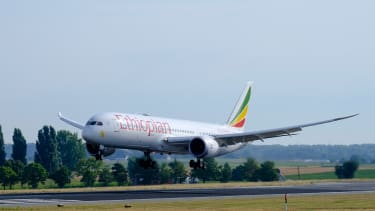The incident took place on board an Ethiopian Airlines Boeing 737-800 en route from Khartoum to Addis Ababa, the report said, “when the pilots fell asleep” and “the aircraft continued past the top of descent.”
Data obtained by the website indicates that the aircraft was cruising at 37,000 feet on autopilot when it failed to descend at Addis Ababa Bole International Airport, its scheduled destination, on August 15.
Air traffic control were apparently unable to reach the crew despite making several attempts at contact. However, an alarm was triggered when the plane overshot the runway and continued along the route.
The aircraft subsequently began to descend, landing safely around 25 minutes later.
Automatic Dependent Surveillance-Broadcast (ADS-B) data shows the aircraft overflying the runway, before beginning its descent and maneuvering for another approach.
“We have received a report which indicates Ethiopian flight number ET343 en route from Khartoum to Addis Ababa temporarily lost communication with Addis Ababa Air Traffic Control on 15 August 2022,” reads a statement issued by Ethiopian Airlines on Friday.
“The flight later landed safely after communication was restored. The concerned crew have been removed from operation pending further investigation.
“Appropriate corrective action will be taken based on the outcome of the investigation. Safety has always been and will continue to be our first priority,” the statement said.
‘Deeply concerning’
Aviation analyst Alex Macheras has since taken to Twitter to express his shock at the “deeply concerning incident,” which he suggests may have been the result of pilot exhaustion.
“Pilot fatigue is nothing new, and continues to pose one of the most significant threats to air safety — internationally,” he tweeted on Thursday.
“Fatigue, both acute and cumulative, has become Southwest Airlines’ number-one safety threat,” the Southwest Airlines Pilots Association, or SWAPA, told airline executives in a letter back in April.
According to the letter, the rising demand for air travel as the industry begins to bounce back from the Covid-19 pandemic, and cancellation chaos brought about by severe weather were among the reasons for the increase in pilot exhaustion.
Back in May, Italian newspaper Repubblica reported that an ITA pilot had been fired after “falling asleep” during a flight between New York and Rome.
The co-pilot was said to be taking an “authorized rest” at the time, leading to the Airbus A330 losing communication with air traffic control for ten minutes, according to the report.










Discussion about this post